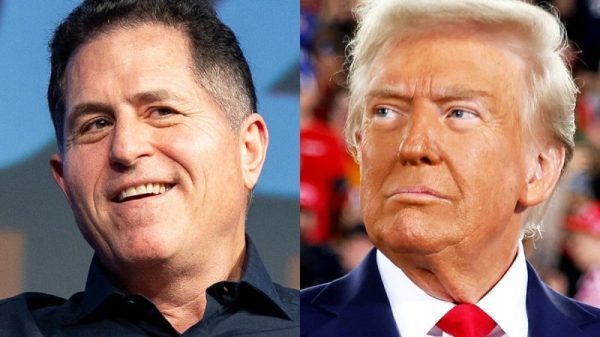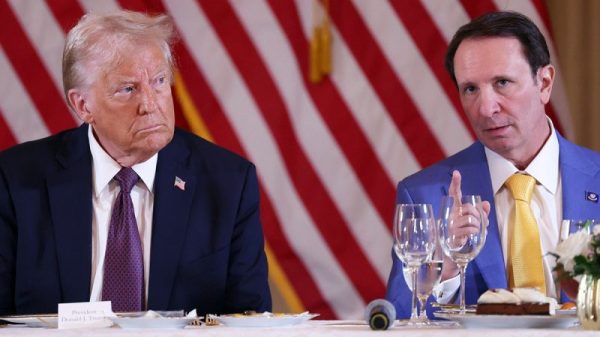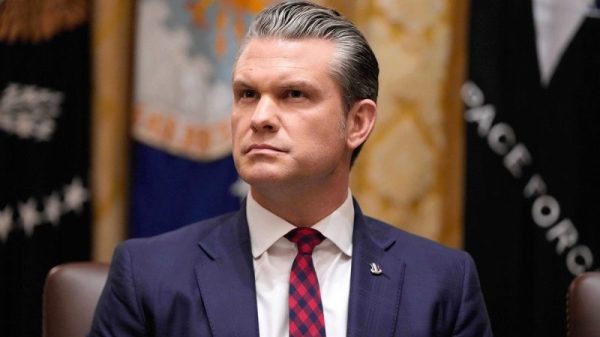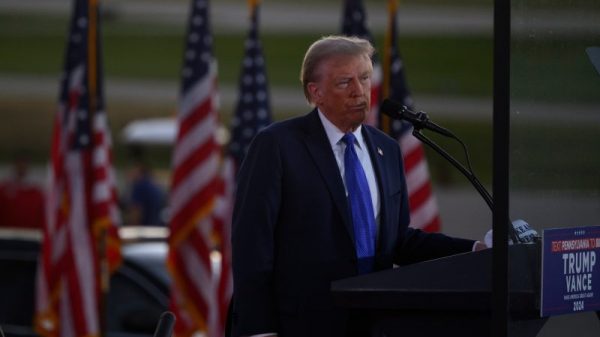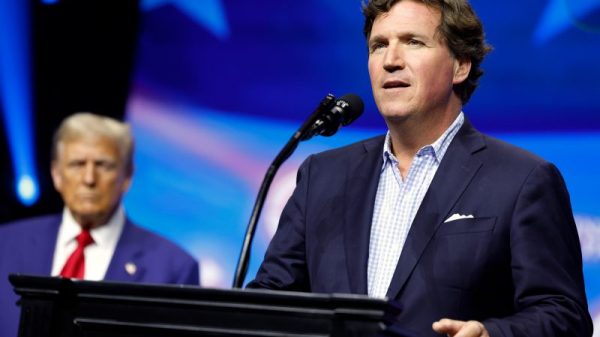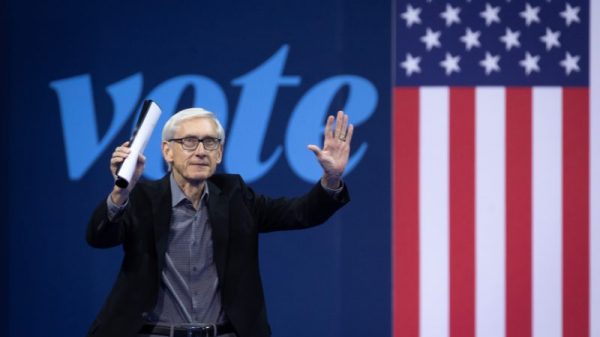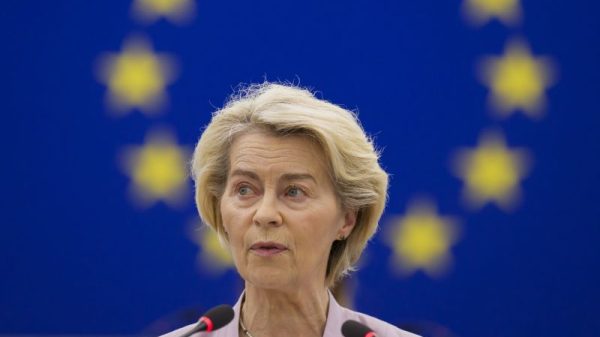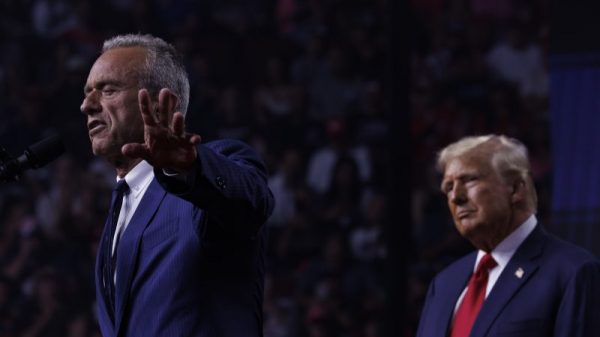Vice President Kamala Harris’s acceptance speech on the final night of the 2024 Democratic National Convention in Chicago featured high rhetoric but not many facts easily checked. Here are five claims made by Harris that caught our attention, in the order in which they were made.
As is our practice, we do not award Pinocchios for a roundup of statements made during convention events.
“We are not going back to when Donald Trump tried to cut Social Security and Medicare.”
This is mostly false. We have awarded the Harris-Walz campaign Three Pinocchios for a version of this claim, but that hasn’t stopped Democrats from asserting this all week.
On Medicare, virtually all anticipated savings sought by Trump would have been wrung from health providers, not Medicare beneficiaries, as a way of holding down costs and improving the solvency of the old-age health program. Trump, in fact, borrowed many proposals from Barack Obama, who had failed to get them through Congress.
Marc Goldwein, senior vice president at the nonpartisan Committee for a Responsible Federal Budget, which seeks to lower the budget deficit, closely studied the Trump proposals each year.
“The basic argument here is quite ridiculous,” he said of a Harris-Walz campaign tweet that made a similar claim. Goldwein noted that the Inflation Reduction Act, for which Harris cast the tiebreaking vote to secure passage, also reduced health-care costs for Medicare, such as through inflation caps. “By the same logic, you could say Joe Biden cut Medicare.”
As for Social Security, Trump kept his promise not to touch retirement benefits, bucking longtime efforts by Republicans to raise the retirement age. But Trump did seek, without success, to reduce spending for Social Security Disability Insurance as well as Supplemental Security Income, which is administered by the Social Security Administration.
Trump has insisted he will not cut benefits for Medicare or Social Security if he is elected president again.
“He doesn’t actually fight for the middle class. Instead, he fights for himself and his billionaire friends, and he will give them another round of tax breaks that will add up to $5 trillion to the national debt.”
The numbers don’t tell the whole story. Harris’s $5 trillion figure reflects the cost of extending the 2017 tax cuts. (The Congressional Budget Office estimated $4.6 trillion.) Because of the way the law was written, the tax cuts expire in 2027 and, unless Congress acts, Americans would face a steep tax increase.
But Harris, like President Joe Biden, has said she would keep in place the tax cuts for people making less than $400,000, which is about 98 percent of taxpayers. To fulfill this pledge without additional taxes appears to add between $1.5 trillion and $2.5 trillion to the deficit over 10 years. The Biden White House said it would help pay some of the cost with higher taxes on the rich, but never fully explained how it would be done.
By wanting to extend some of the tax cuts, Harris is acknowledging that a good chunk — as much as half — of Trump’s tax cuts benefited the middle class.
“He intends to enact what, in effect, is a national sales tax. Call it a Trump tax that would raise prices on middle class families by almost $4,000 a year.”
This is a high estimate. Trump suggested he wants to impose a 10 percent tax on every imported good entering the United States and a 60 percent tax on every imported good from China. The Peterson Institute for International Economics has estimated that this would cost a typical U.S. household in the middle of the income distribution about $1,700 in after-tax income. That’s because tariffs are typically passed on to consumers by importers — a standard economic concept that Trump rejects.
But in recent campaign rallies, Trump has mused that he would impose a 20 percent tariff. Peterson redid the numbers and estimated this would cost that household more than $2,600 a year.
But Harris is relying on an estimate from the left-leaning Center for American Progress Action Fund, which calculates the cost would be $3,900.
“As commander in chief, I will ensure America always has the strongest, most lethal fighting force in the world.”
Biden proposed spending reductions. Harris, having suddenly become the Democratic nominee, has not put out detailed policy papers yet, but it’s worth noting that Biden repeatedly proposed budgets that have failed to keep military spending ahead of inflation.
“He encouraged [Russian President Vladimir] Putin to invade our allies, said Russia could, quote, do whatever the hell they want.”
This needs context. Harris carefully uses the word “encouraged” in this passage. Trump did not issue an invitation to Russia to invade U.S. allies, but (in his telling) was informing the leader of a NATO member country that he would not defend that country from a Russian attack if Trump deemed the nation was delinquent on payments to the military alliance.
In a February rally, Trump said “one of the presidents of a big country” at one point asked him whether the United States would still defend the country if they were invaded by Russia even if they “don’t pay.”
“No, I would not protect you,” Trump claimed he told that leader. “In fact, I would encourage them to do whatever the hell they want. You got to pay. You got to pay your bills.”
One problem with Trump’s story is that throughout the 2016 campaign, his presidency and now this 2024 campaign, Trump has demonstrated that he has little notion of how NATO is funded and operates. He repeatedly claimed that other members of the alliance “owed” money to the United States and that they were delinquent in their payments. Then he claimed credit for the money “pouring in” as a result of his jawboning, even though much of the increase in those countries’ contributions had been set under guidelines arranged during the Obama administration.
Since 2006, NATO guidelines have asked each member country to spend at least 2 percent of its gross domestic product on defense. In 2014, NATO decided to increase its spending in response to Russia’s seizure of Ukraine’s Crimea region, with a commitment of reaching 2 percent in each country by 2024. This money does not end up in NATO’s coffers, as Trump often asserts. (Direct funding, for military-related operations, maintenance and headquarters activity, is based on gross national income — the total domestic and foreign output claimed by residents of a country — and is adjusted regularly.)
NATO figures show that the defense expenditures for NATO countries other than the United States have been going up — in a consistent slope — since 2014. As we noted, that’s when NATO decided to boost spending in response to Russia’s seizure of Crimea.
(About our rating scale)
Send us facts to check by filling out this form
Sign up for The Fact Checker weekly newsletter
The Fact Checker is a verified signatory to the International Fact-Checking Network code of principles








